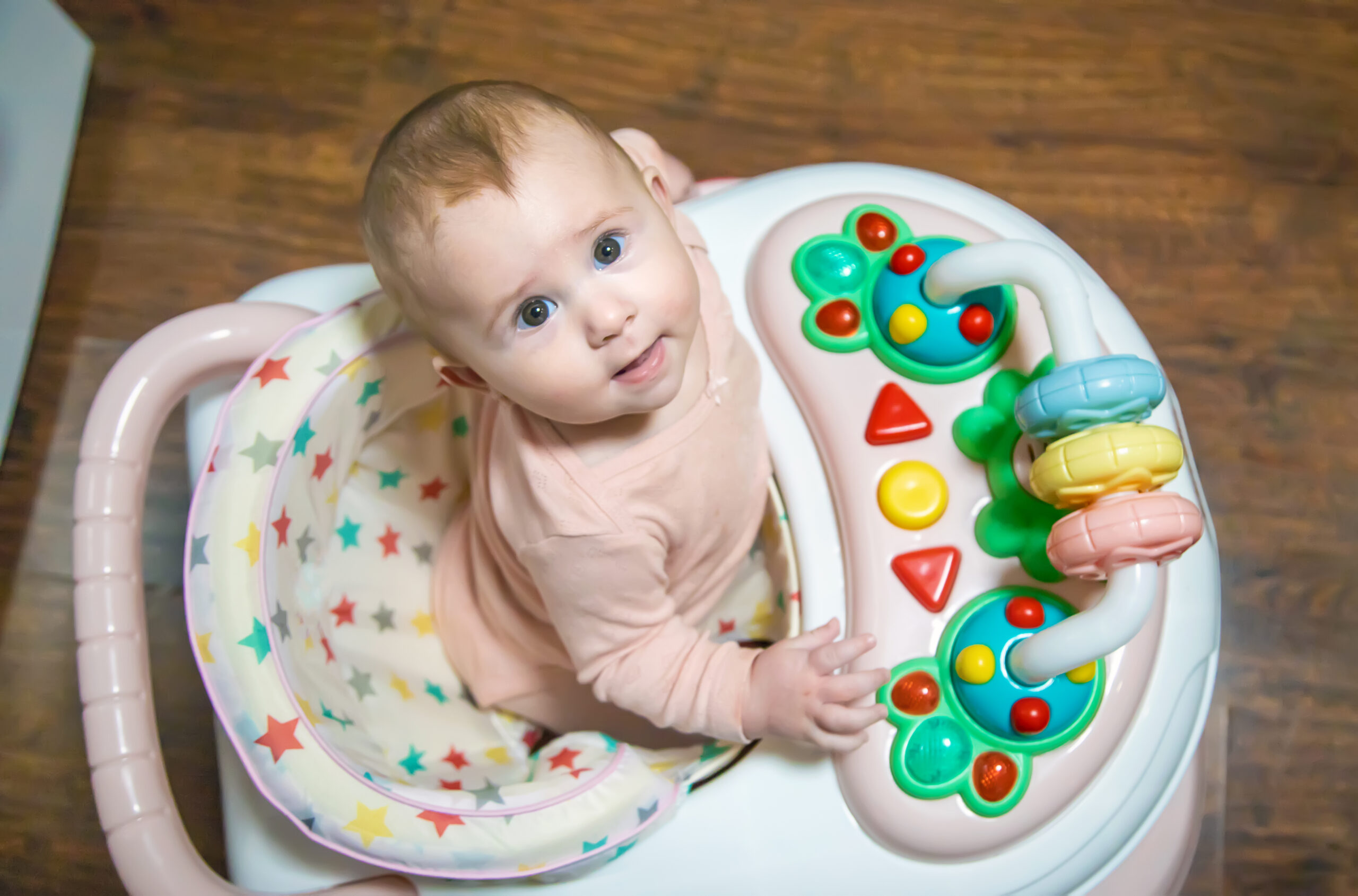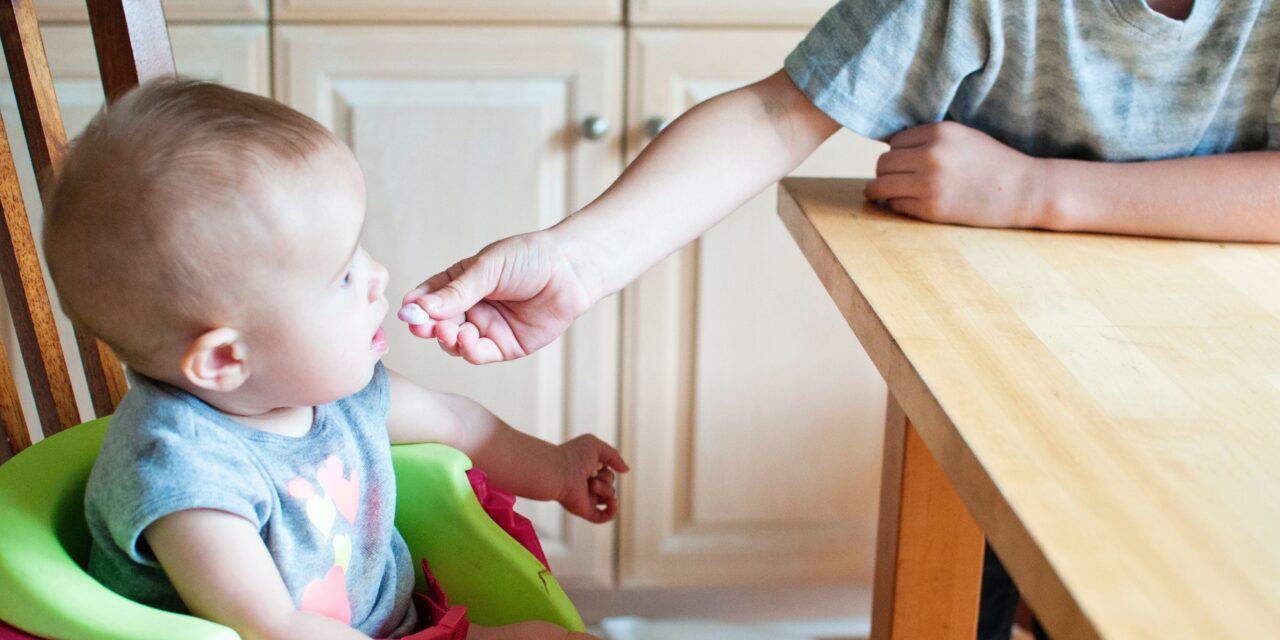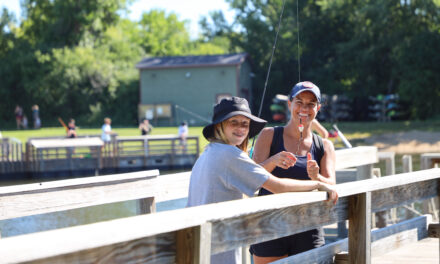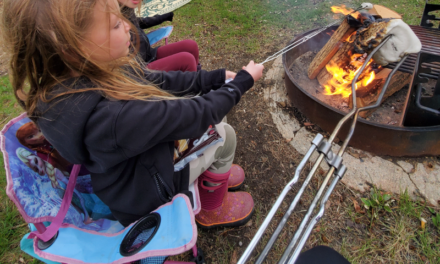By Alissa Colshan, PT, DPT at LifeScape
Take a stroll down the baby aisle at a store, and you’ll quickly become overwhelmed with all the latest swings, seats, walkers, jumpers, and more. Where do you begin to make the best decision for you and your baby? Navigating the world of parenting can be tricky, which is why the Therapy Team at LifeScape has created a new platform just for you called LifeScape+. It’s a video resource center that provides guidelines to keep in mind as your baby grows.
A fun series to explore is all about devices used for positioning!
Birth to 4 Months

Devices used for laying include bouncy seats, rockers, swings, and baby loungers. The ages for babies who use these devices are typically birth to four months of age, as they can’t sit independently and are still working on developing head control. They work great when you need a safe, supervised place to put your infant when cooking a meal or just taking a minute for yourself! Use small, rolled-up blankets or burp clothes to hold your baby’s head in midline to prevent concerns like neck tightness or looking in only one direction.
You don’t have to buy any of these devices if you don’t want to! You can place your baby on their side, tummy, or back on a blanket or activity mat on the floor. Add toys or a mirror to encourage looking in all directions, reaching, and kicking.
4-6 Months

Many infant positioning devices for sitting include supportive infant seats and chairs, like Bumbos, Sit-Me-Up Floor Seats, and Upseats. These are great for working on fine motor activities and midline play. They’re best for babies who can sit upright with your support and have good head control, usually around 4-6 months of age. If you have concerns about a flat spot on your child’s head, these devices work well for minimizing time spent on their back. Depending on the size of your infant, use small, rolled-up towels or blankets to fill in the gaps around them to improve their posture.
Laundry baskets, storage containers, and boxes are all great alternatives to support your little one as they sit.
6+ Months

What if your child is already on the move? Activity centers, exersaucers, jumpers, and walkers are devices suitable for babies aged six months and above who have good head control and can sit independently or with limited assistance. These devices help babies develop their fine motor and midline play skills and are a great hands-free alternative to keep your baby happy. Babies who can’t yet independently explore their environment enjoy the movement these devices allow.
If your child’s feet aren’t flat on the floor, use a step, book, or box under them to allow for improved positioning and minimize being up on their toes.
Infant play yards and playpens are great alternatives that allow your child to explore their mobility. Push toys and small activity tables can also give your infant alternative surfaces to play at in various positions, including sitting, kneeling, and standing.
No matter what positioning devices you use, limit your baby’s use to no more than 15-20 minutes at a time, 2-3 times per day. You should also take your infant out of the device as soon as they start to get tired and are unable to keep their head in midline to prevent concerns like neck tightness and head tilting. After your infant spends time in a positioning device, give them plenty of time on the floor to play and work on their motor skills.
If you have any questions about the use of a positioning device, or if you are concerned about your infant’s development, including milestones, tight neck muscles, preference to look in one direction, or a flat spot on their head, give the LifeScape Therapy Team a call at (605) 444-9700 or visit LifeScape + to discover more in-depth recommendations and alternatives for infant positioning devices.














